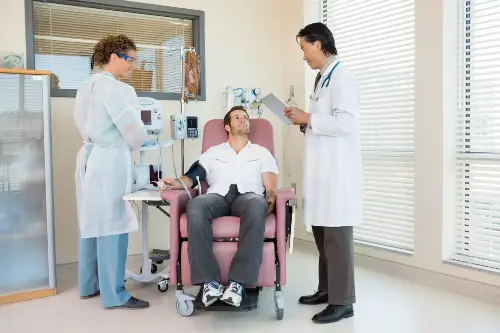In recent years, reports have been surfacing with a disturbing trend—a noticeable increase in cancer rates among young people. This phenomenon has prompted researchers and medical professionals to delve deeper into understanding the reasons behind this alarming pattern. Traditionally, cancer has been associated with ageing, but these new statistics suggest that younger generations are not immune to what was once considered a disease of the elderly.

Connecting Lifestyle and Environmental Factors to Cancer
Several factors contribute to the rise in cancer rates among young individuals, and lifestyle choices top that list. Sedentary behaviour, poor diet, and obesity are potent triggers for various cancers, including breast, colorectal, and kidney cancers. These lifestyle-related factors are not solely responsible but work in tandem with environmental exposures such as ultraviolet (UV) radiation, pollution, and certain chemicals.
The technology-driven world has also seen a spike in screen time and decreased physical activity, contributing indirectly to higher cancer risk. Diets rich in processed foods and low in fruits and vegetables compound the problem, pushing the body's defences to their limits.
Early Detection and Prevention Strategies
Catch it early, and there’s a better chance of beating it—this is the mantra for many cancers. Awareness of symptoms and regular screening can lead to early detection, significantly improving the survival rate for several cancer types. For example, regular self-examinations and mammograms can catch breast cancer early, and colonoscopies can spot colorectal cancer.
Young people are encouraged to educate themselves about cancer and speak openly with health professionals. It’s also crucial to dispel the myth that cancer is an older person's disease, as this can lead to complacency in seeking diagnosis and treatment.

Genetic Predispositions and Cancer
Our genes can predispose us to certain types of cancer. Inherited mutations in genes like BRCA1 and BRCA2 significantly increase the risk of developing breast and ovarian cancers. Young individuals with a family history of such conditions are advised to undergo genetic testing and counselling, as it can aid in making informed decisions about preventive measures, which may include lifestyle changes or, in some cases, prophylactic surgeries.
Tackling the Obesity Epidemic
One cannot discuss rising cancer rates without mentioning the global obesity epidemic. Excess body fat is linked to an increased risk of at least 13 different types of cancer, according to the International Agency for Research on Cancer. Young people are grappling with overweight and obesity issues now more than ever, propelled by high-calorie diets and inactivity.
Adopting a Healthier Lifestyle
While some contributing factors to cancer are beyond individual control, there are actions young people can take to reduce their risk. Here’s what can make a difference:
- Prioritise a balanced diet: Incorporating plenty of fruits, vegetables, and whole grains.
- Stay active: Regular physical exercise helps maintain a healthy weight and reduces cancer risk.
- Limit alcohol and abstain from smoking: Both have been associated with numerous cancers.
- Reduce unnecessary exposure to radiation: Avoid excessive sunbathing and unnecessary medical imaging tests.
- Be vaccine-savvy: Vaccinations such as HPV and Hepatitis B can prevent certain cancers.

Embracing the Power of Knowledge and Action
While the rising cancer rates in young people can seem daunting, it's empowering to know that many cancers are preventable. Knowledge truly is power in this context, and being armed with the right information can lead to positive action. Emphasising education about cancer risks and prevention strategies should be a priority for both individuals and healthcare systems.
Youth engagement in healthy practices, combined with support from educational campaigns and health policy initiatives, can help to stem the tide of rising cancer rates. Collective effort from communities, healthcare providers, and policymakers is essential in creating environments conducive to a healthier lifestyle for the younger populace.
Through comprehensive approaches addressing lifestyle, environmental, and genetic factors, we can not only reduce cancer risk but also build a foundation for a healthier future. Let's remain vigilant and proactive about our health, remembering that while cancer is an adversary we all face, it's one we can collectively work towards preventing—even from a young age.
